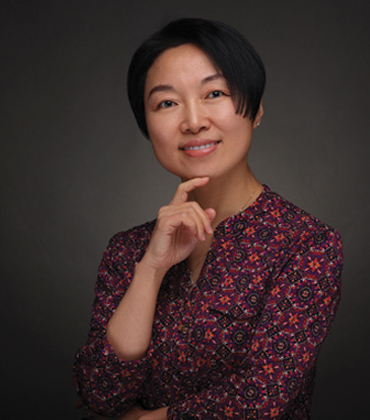Genective’s story over the last five years reads like focused scientific momentum finally finding its moment. As a 100 percent subsidiary of Limagrain, the company has pushed a novelty driven R&D strategy from discovery into validation, and now toward commercialization. That arc is defined by two crucial advances: a whole new class of insect control protein, and lead genes that show strong efficacy against resistant Fall Armyworm (FAW) and Corn Rootworm (CRW). Together, they set the stage for global partnerships and deployment across corn, soy, and cotton.
The science is concrete and consequential. The new protein class adds distinct mode-of-action, widening the industry’s toolbox for durable stacks and stewardship in an era of escalating resistance. In parallel, Genective’s lead genes that have delivered excellent results against FAW and CRW populations have done so even when these pests have developed resistance against all the currently commercialized solutions. The company is explicit about what this means on farm: restoring control where performance has eroded and extending biotech trait durability across geographies and seasons.
“It is a very exciting time at Genective,” says president and CEO Qiaoni Linda Jing. “Through extraordinary team collaboration in the last five years, we have been able to make breakthroughs at different stages of our R&D pipeline.”
What Genective Does and Why It is Different
What anchors the trajectory is an execution model built for scale. Genective researches, develops, and commercializes transgenic traits, for corn, soy, and cotton. The company’s novelty-driven strategy is designed to discover and advance traits with distinctive modes of action, then move them efficiently through development and regulatory pathways toward global deployment via commercial partners.
Since moving its global headquarters from Paris, France to Central Illinois in 2020, Genective has built a people and innovation focused culture within the University of Illinois Research Park, integrating talent and infrastructure to accelerate translation from lab to field. With Limagrain’s continued backing, the company is deliberately pursuing a partnership-first route to market, enabling rapid scale-up, global stewardship, and fit-for-purpose stacking with existing trait platforms.
“We are very excited that the novelty-driven strategy of Genective is bearing fruit, and we foresee commercialization through partnerships with global players in the agriculture market,” said Fermin Azanza, Global Head of Research for Limagrain Field Seeds and Chairman of Genective’s Board.
Meeting the Resistance Challenge
Resistance is a global challenge for the whole seeds industry and Genective took it head-on. By introducing its unique protein class and demonstrating performance against resistant FAW and CRW, two devastating pests that, respectively, cause five-nine billion dollars and one to two billion dollars in economic losses every year, Genective is aligning discovery with the industry’s central imperative: keep trait durability ahead of pest adaptation. The approach is deliberately complementary built to enhance stack resilience, protect yield stability, and extend product lifecycles where resistance has weakened field performance.
With scientific breakthroughs in hand, institutional backing, and a clear route to market, Genective is moving from R&D progress to commercial delivery. The company’s ethos novelty, speed, reliability now converges with a pressing global need. The result is a platform of sustainable biotech traits designed to help agriculture stay ahead of resistance while safeguarding productivity in essential crops.
The science is concrete and consequential. The new protein class adds distinct mode-of-action, widening the industry’s toolbox for durable stacks and stewardship in an era of escalating resistance. In parallel, Genective’s lead genes that have delivered excellent results against FAW and CRW populations have done so even when these pests have developed resistance against all the currently commercialized solutions. The company is explicit about what this means on farm: restoring control where performance has eroded and extending biotech trait durability across geographies and seasons.
“It is a very exciting time at Genective,” says president and CEO Qiaoni Linda Jing. “Through extraordinary team collaboration in the last five years, we have been able to make breakthroughs at different stages of our R&D pipeline.”
What Genective Does and Why It is Different
What anchors the trajectory is an execution model built for scale. Genective researches, develops, and commercializes transgenic traits, for corn, soy, and cotton. The company’s novelty-driven strategy is designed to discover and advance traits with distinctive modes of action, then move them efficiently through development and regulatory pathways toward global deployment via commercial partners.
-
Through extraordinary team collaboration in the last five years, we have been able to make breakthroughs at different stages of our R&D pipeline.
Since moving its global headquarters from Paris, France to Central Illinois in 2020, Genective has built a people and innovation focused culture within the University of Illinois Research Park, integrating talent and infrastructure to accelerate translation from lab to field. With Limagrain’s continued backing, the company is deliberately pursuing a partnership-first route to market, enabling rapid scale-up, global stewardship, and fit-for-purpose stacking with existing trait platforms.
“We are very excited that the novelty-driven strategy of Genective is bearing fruit, and we foresee commercialization through partnerships with global players in the agriculture market,” said Fermin Azanza, Global Head of Research for Limagrain Field Seeds and Chairman of Genective’s Board.
Meeting the Resistance Challenge
Resistance is a global challenge for the whole seeds industry and Genective took it head-on. By introducing its unique protein class and demonstrating performance against resistant FAW and CRW, two devastating pests that, respectively, cause five-nine billion dollars and one to two billion dollars in economic losses every year, Genective is aligning discovery with the industry’s central imperative: keep trait durability ahead of pest adaptation. The approach is deliberately complementary built to enhance stack resilience, protect yield stability, and extend product lifecycles where resistance has weakened field performance.
With scientific breakthroughs in hand, institutional backing, and a clear route to market, Genective is moving from R&D progress to commercial delivery. The company’s ethos novelty, speed, reliability now converges with a pressing global need. The result is a platform of sustainable biotech traits designed to help agriculture stay ahead of resistance while safeguarding productivity in essential crops.
Thank you for Subscribing to Agri Business Review Weekly Brief



